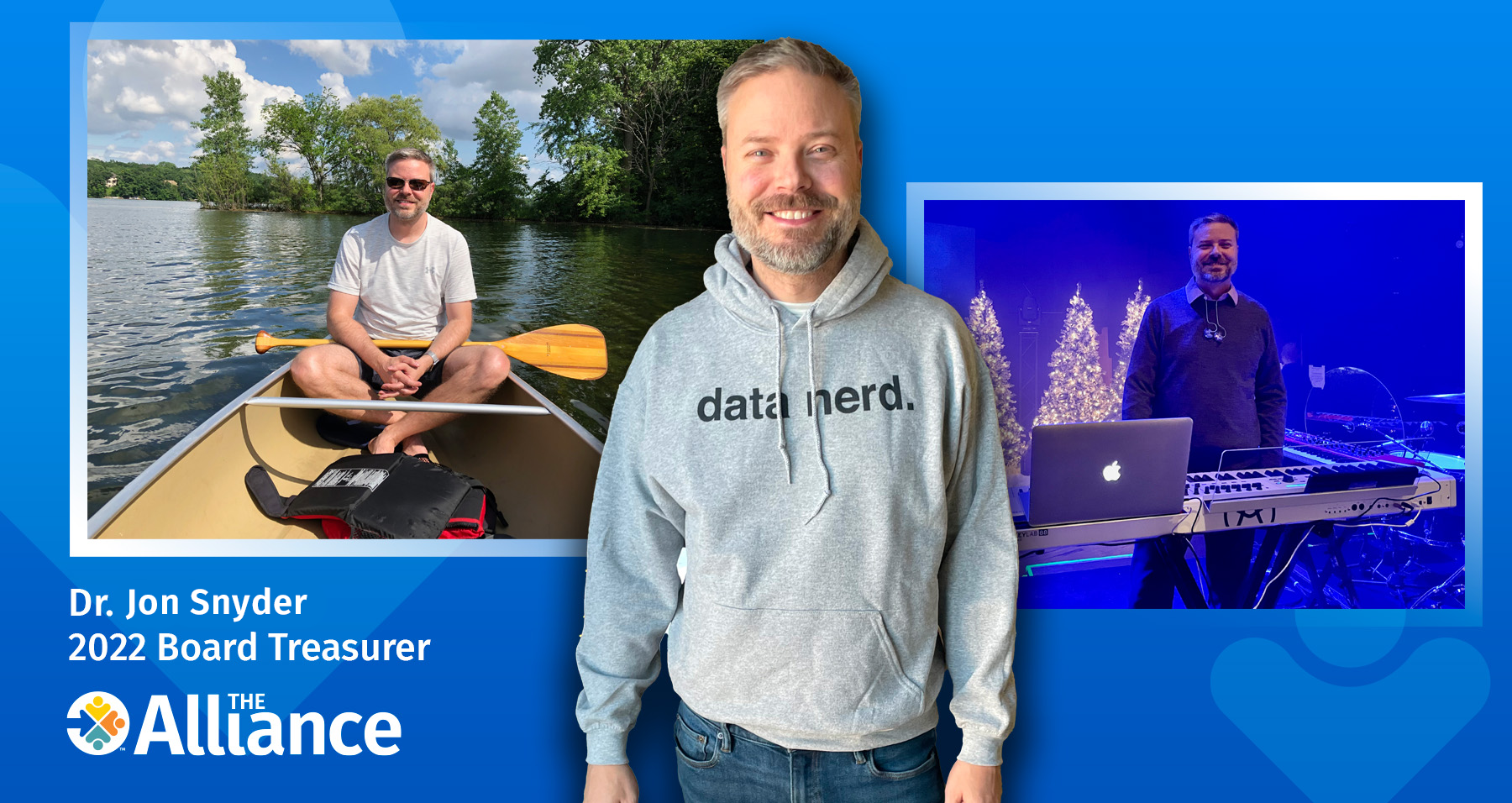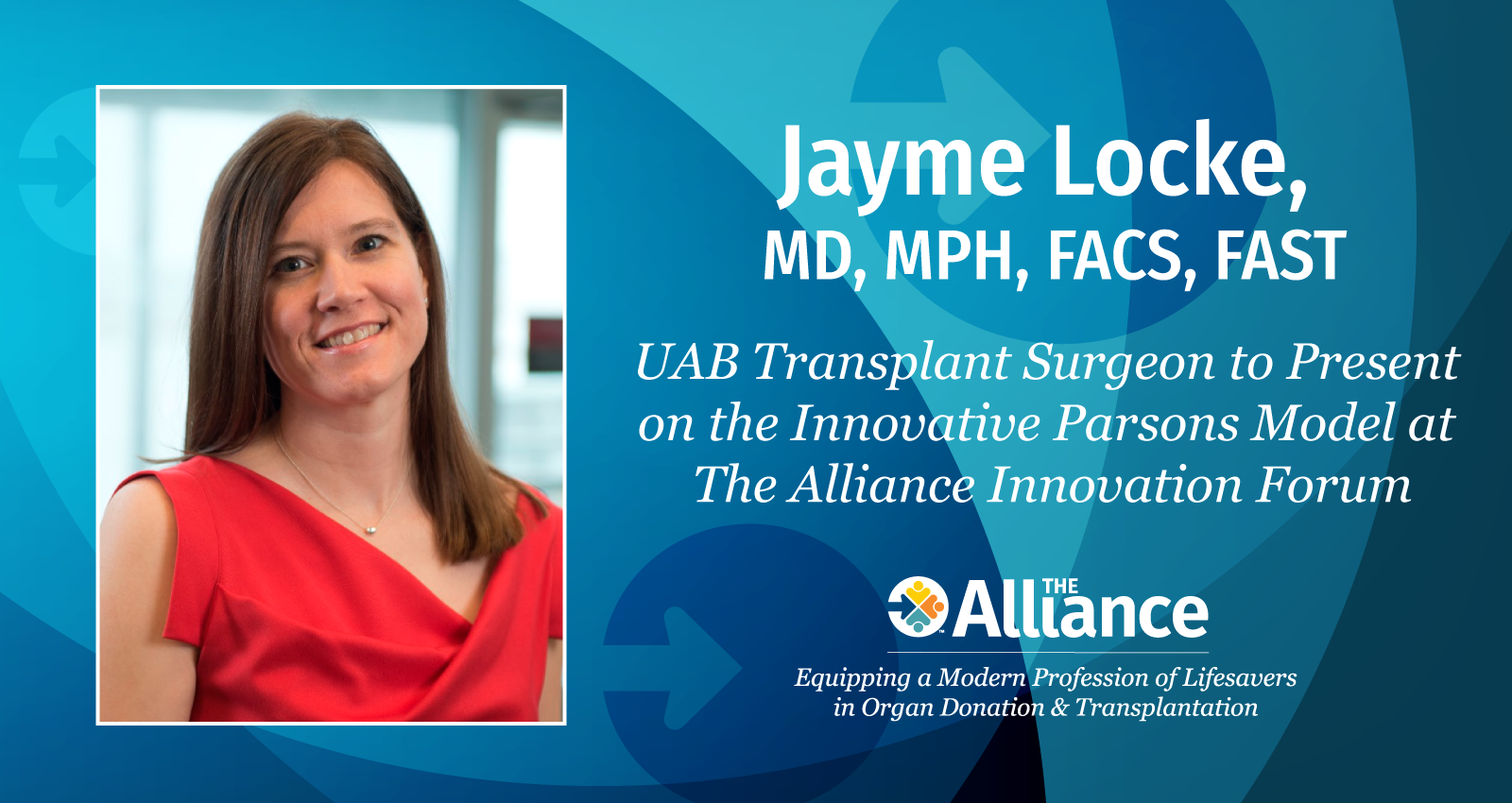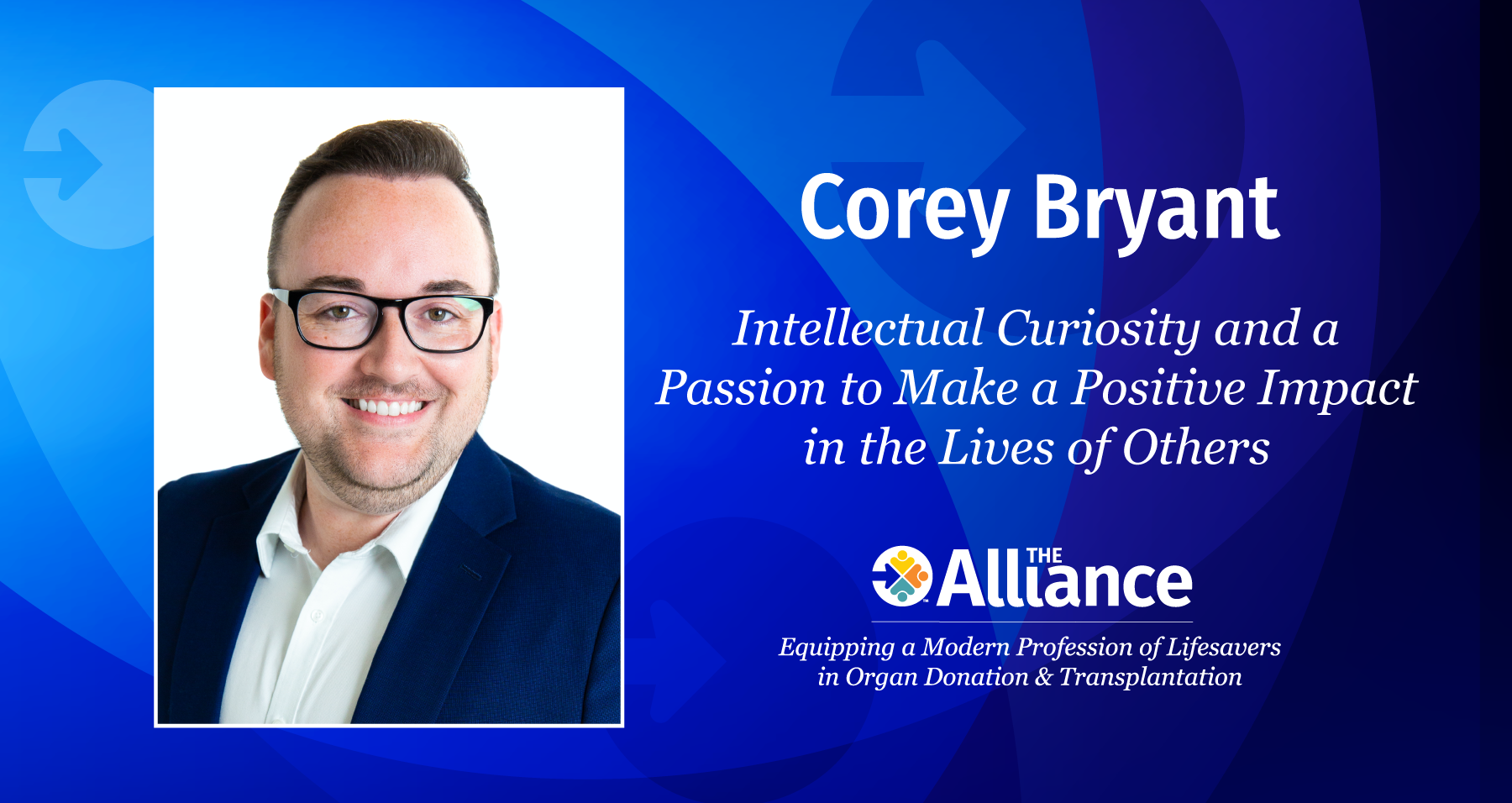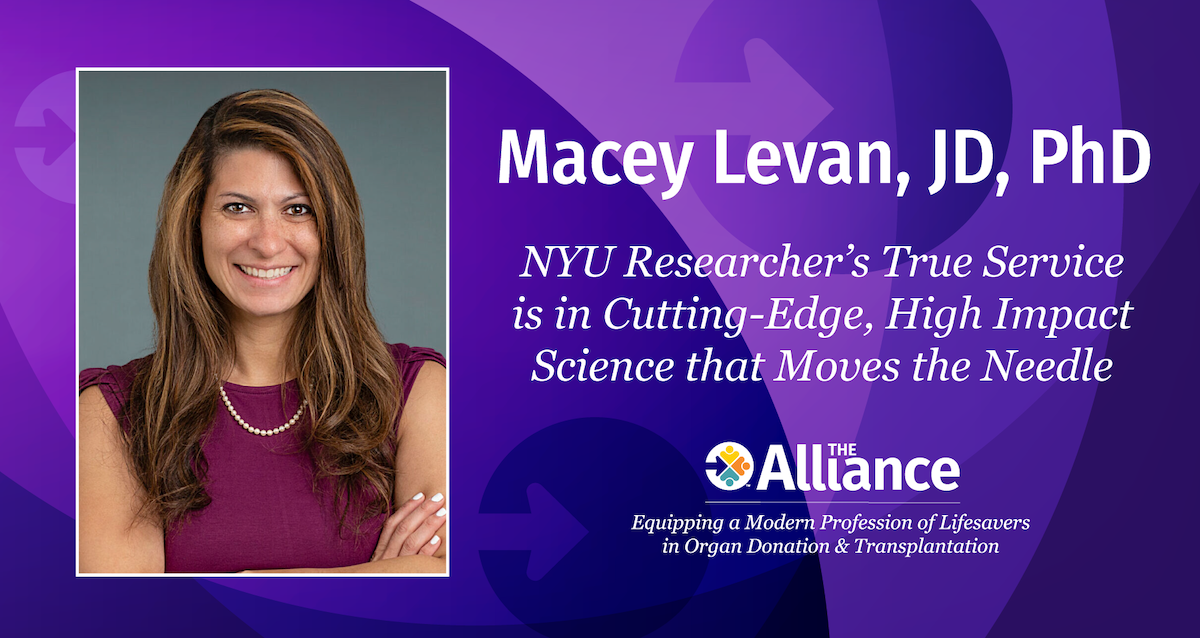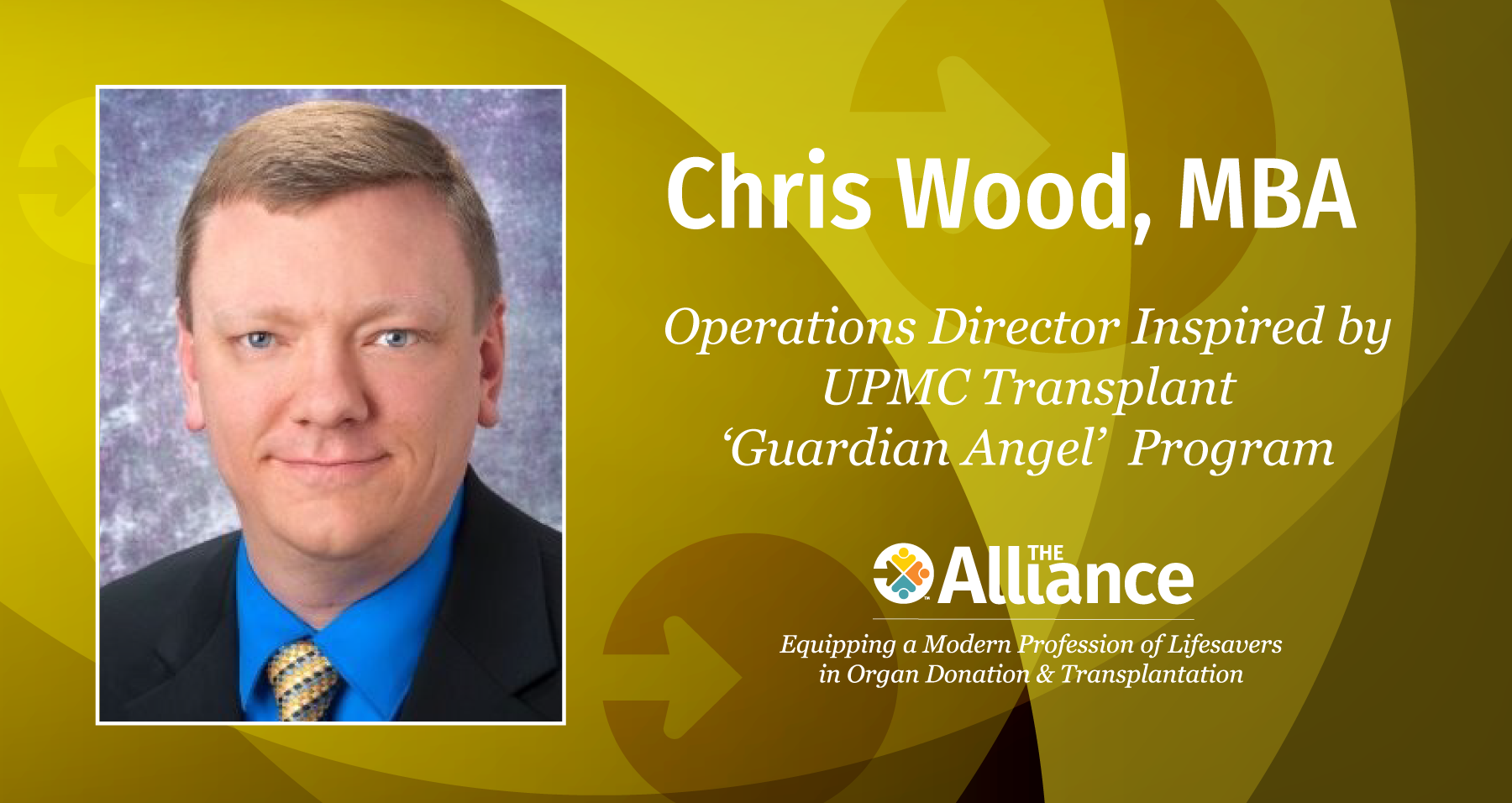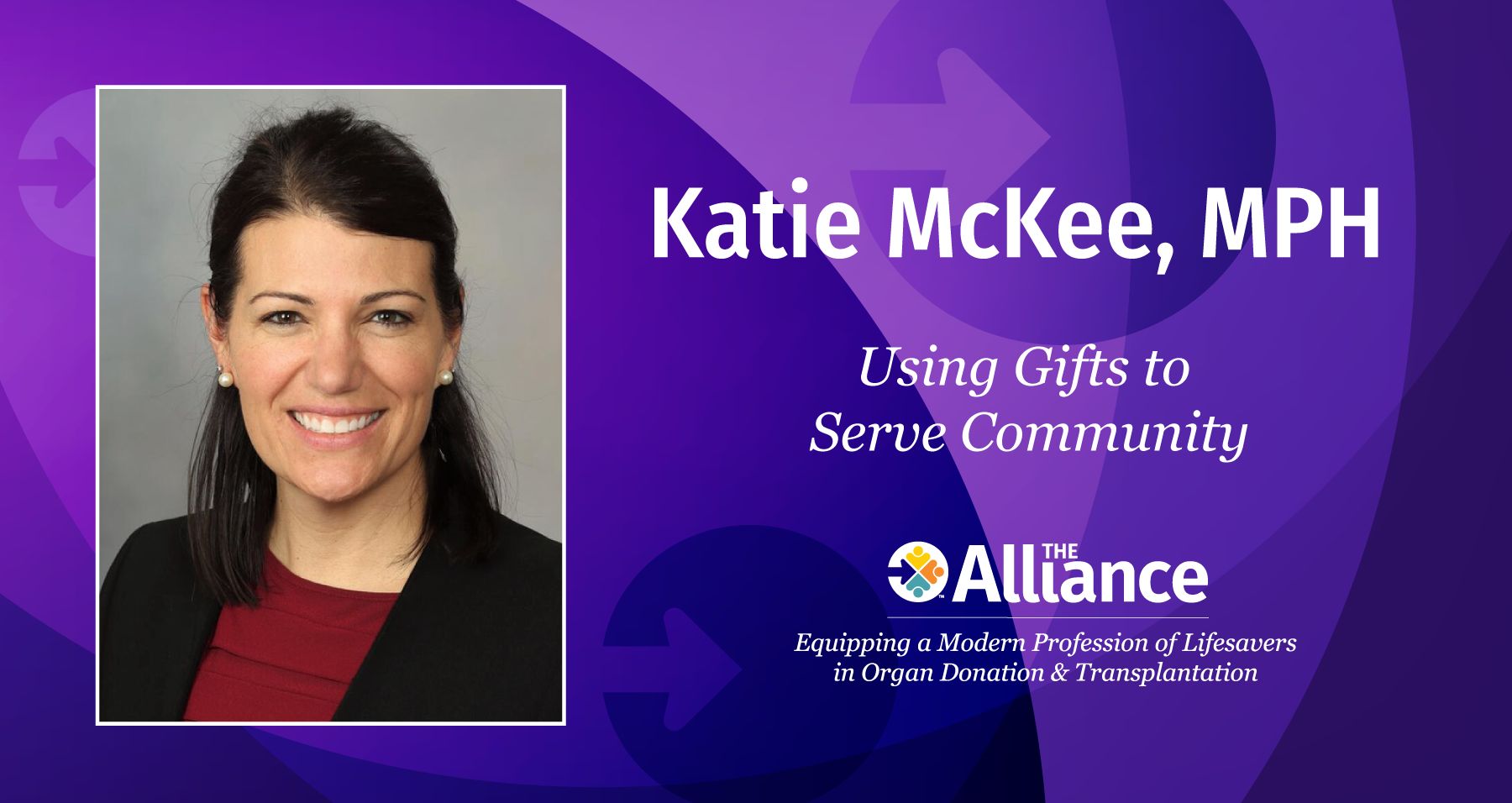Epidemiologist Jon Snyder has made it his personal mission to use data and analytics to tell the story of organ donation and transplantation more broadly. Snyder, who operates the Scientific Registry of Transplant Recipients (SRTR) and is the director of Transplant Epidemiology for the Chronic Disease Research Group (CDRG) of the Hennepin Healthcare Research Institute (HHRI) in Minneapolis, is serving as treasurer of the board of directors of the Organ Donation and Transplantation Alliance in 2022.
He became involved with the SRTR in 2010 when his group received the federal contract from the Health Resources and Services Administration (HRSA) of the US Department of Health and Human Services. The contract has since been renewed for its third five-year term, through 2025. “My personal mission is to use data and analytics to improve the organ donation and transplantation system for the ultimate benefit of the patients the system exists to serve. The Alliance’s mission aligns with that really well. The Alliance brings disparate groups together to focus on that common mission of making people’s lives better. I feel fortunate to be a part of the organization.”
“The first step is just knowing where you stand,” continues Snyder. “I’ve created a pyramid that I call the hierarchy of metric needs; it’s like Maslow’s hierarchy of needs. The basic idea is that you start at the bottom where you have some information that you want to know and then you can translate that into data. You can then translate that data into some type of a metric, but then you’re only halfway up the pyramid at that point.”
“I want to emphasize to the transplantation community that understanding and knowing where you can find the metric, that’s that first half of the pyramid. But the second half of the pyramid, the self-actualization peak of the pyramid, is working to translate that metric into understanding or inference. That inference should then lead to some action that is targeting a specific goal.”
Snyder is working to share information about the new metrics that the Organ Procurement and Transplantation Network (OPTN) Membership and Professional Standards Committee (MPSC) will use to track transplantation program performance. “The MPSC wants to take a more holistic view of what it means to be a high-quality transplant program,” says Snyder. “Historically, only first year post transplant outcomes were reviewed, and the transplant community has argued that this is only one aspect of a high-performing program, but there are others. I think the MPSC is rightly moving their attention to things that could make the pre-transplant experience better, so they’re going to be looking at the pretransplant survival experience and offer acceptance patterns, too.”
Snyder noted that the SRTR has tools on their secure site that can perform more detailed analyses for transplant programs such as subgroup analysis or trends in data for better understanding. “It’s important to really understand the data so that you’re affecting change in the right direction and putting your energy in the right place.”
Snyder leads a team of approximately 50 at the SRTR with 30 on staff in Minneapolis including biostatisticians, epidemiologists, software engineers, and IT and communications professionals. “The remainder are what we call our Senior Staff and those are clinicians, surgeons, or other transplant professionals located all over the country.”
His career in organ donation and transplantation began when he joined HHRI in 1999. “My role focused fairly exclusively on the epidemiology of kidney transplantation,” he says. Our research touched on a number of aspects of kidney disease and kidney transplantation, and that helped solidify my personal career mission to use my skills to advance the health and lives of patients with kidney disease.” That mission evolved for Snyder over time into using data and analytics to tell the story of organ transplantation more broadly, with the end goal always being to make the lives of transplant patients better.
Snyder was born in Michigan, grew up in Minneapolis, and went to St. Olaf College in Northfield, MN to major in music (piano) and mathematics education. He says a light bulb went off for him in a statistics class when he was working on a project for the Mayo Clinic (his professor’s wife was a biostatistician at Mayo). “I said, ‘Hey, we can use mathematics and statistics to make health care better. And that was the defining moment in my early career when I discovered that we could use data to impact people’s lives.” He went on to earn a Ph.D. in epidemiology from the University of Minnesota.
Most of Snyder’s free time is devoted to making music. He plays the piano in a church worship band and this past Christmas, the band played 20-minute sets at six services on Christmas Eve. He said a ‘Covid addition’ to his life has been learning to play the classical guitar and he recently bought an accordion and is learning to play it, too.
He and his wife, Kari, have two children. Their daughter is a junior at St. Olaf and their son is a freshman at the University of Wisconsin Eau Claire.
In addition to his work on The Alliance’s board, he serves on the board of Donate Life America, the clinical policy board of LifeSource, and is a Statistical Editor for the American Journal of Transplantation and an Associate Editor for Transplantation. His top recommendation for a book to read that touches on statistical thinking in many aspects of life is The Signal and the Noise: Why So Many Predictions Fail—but Some Don’t by Nate Silver, founder of FiveThirtyEight.com.
His dedication to the transplant community has been recognized with several awards. In 2014, he received the Executive Directors Award from the Association of Organ Procurement Organizations (AOPO) which is presented to individuals outside of the OPO community who have greatly influenced and impacted the work and missions of OPOs. In 2016, he was Invited to participate in the Organ Donation and Transplantation Data Meeting convened by the Executive Office of the President of the United States, Office of Science and Technology Policy, The White House.
“Organ transplantation and donation is such a wonderful space to be in,” says Snyder. “I’ve always been drawn to the human side of turning tragedy and loss into the lifesaving gift of transplantation.”




